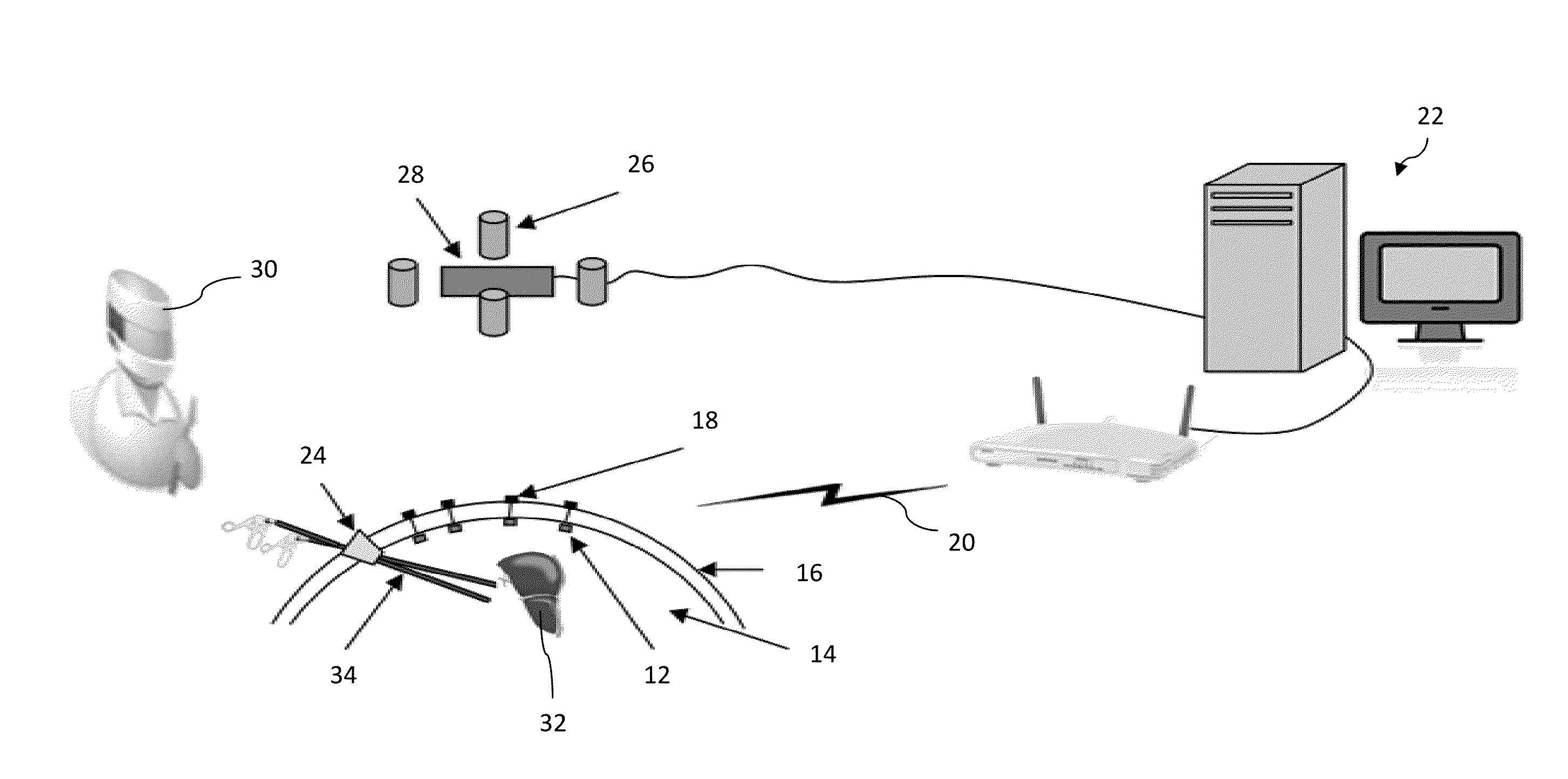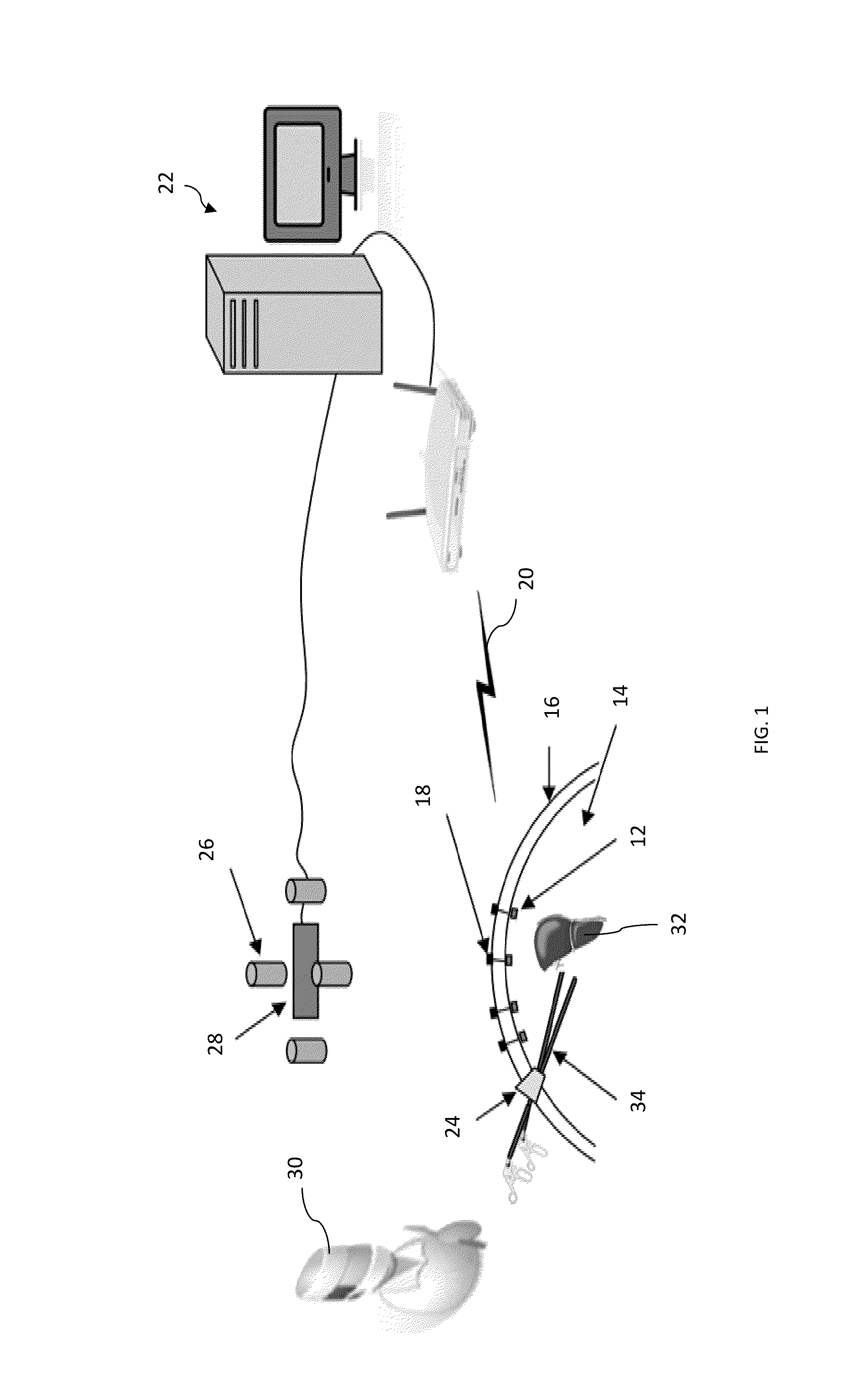See-through abdomen display for minimally invasive surgery
a minimally invasive surgery and abdomen technology, applied in the field of minimally invasive surgery, can solve the problems of inconvenient and unclear video orientation, inconvenient operation, and longer completion time than equivalent open surgery
- Summary
- Abstract
- Description
- Claims
- Application Information
AI Technical Summary
Benefits of technology
Problems solved by technology
Method used
Image
Examples
Embodiment Construction
[0042]In the following detailed description of the preferred embodiments, reference is made to the accompanying drawings, which form a part hereof, and within which are shown by way of illustration specific embodiments by which the invention may be practiced. It is to be understood that other embodiments may be utilized and structural changes may be made without departing from the scope of the invention
[0043]In an embodiment, as depicted in FIG. 1, the claimed invention includes a plurality of wireless camera modules 12 that are inserted and retreated into a body cavity of interest 14 with a surgery gripper. The tiny wireless camera modules 12 are anchored around the cavity of interest 14 and provide a large view of visual feedback. The feedback is processed in real-time and displayed via projectors 26 on the human body in alignment with the physical cavity of interest 14 and provides a virtually transparent effect so that a surgeon can operate a MIS / LESS procedure with the view of ...
PUM
 Login to View More
Login to View More Abstract
Description
Claims
Application Information
 Login to View More
Login to View More - R&D
- Intellectual Property
- Life Sciences
- Materials
- Tech Scout
- Unparalleled Data Quality
- Higher Quality Content
- 60% Fewer Hallucinations
Browse by: Latest US Patents, China's latest patents, Technical Efficacy Thesaurus, Application Domain, Technology Topic, Popular Technical Reports.
© 2025 PatSnap. All rights reserved.Legal|Privacy policy|Modern Slavery Act Transparency Statement|Sitemap|About US| Contact US: help@patsnap.com



